Pakse
Located in the confluence of the Se Done and Mekong Rivers, Pakse is the most important economic and tourism center of the Southern part of Laos. Pakse is the capital city of Champasak province with the population of approximately 70,000 people. Pakse has long history with many political changes.
- Location: the capital and the most populous city in the northern province of Champasak
- Population: 87,000 people Area: 180 square kilometers Name meaning: Mouth of the river Se
- Religion: Buddhism
- Climate: tropical savanna climate with very warm temperature throughout the year
- Main attraction: the biggest and most beautiful temple Wat Luang; the oldest and largest temple Wat Phabad
- Night center point: Mekong Bank
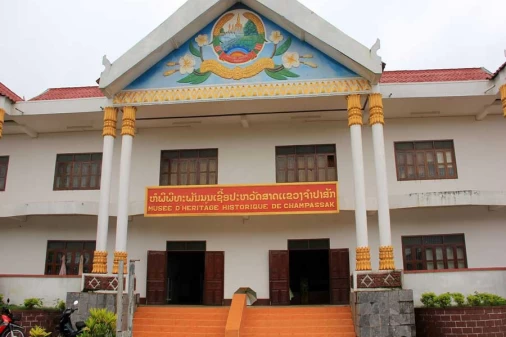
Champasak Historical Heritage Museum
Though the labelling certainly could be better, this is a museum worth visiting. Highlights include...
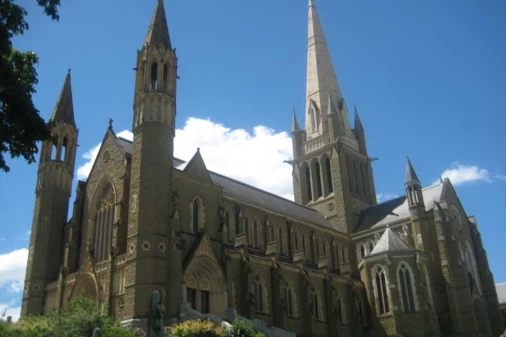
Sacred Heart Cathedral
This modest, tin-roofed building isn’t much to look at from the outside, but the one-of-a-kind paintings...
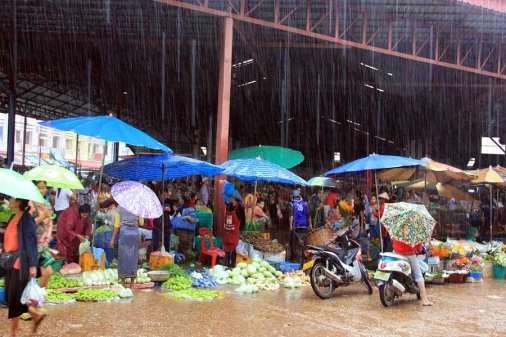
Talat Dao Heuang
This vast market near the Lao–Japanese Bridge is one of the biggest in the country. It’s at its most...
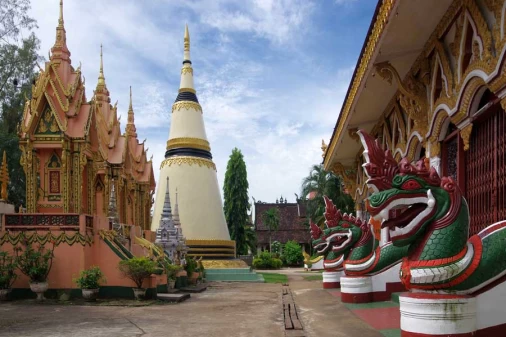
Wat Luang
There are about 20 wats in Pakse, among which the riverside Wat Luang is one of the largest. The old...
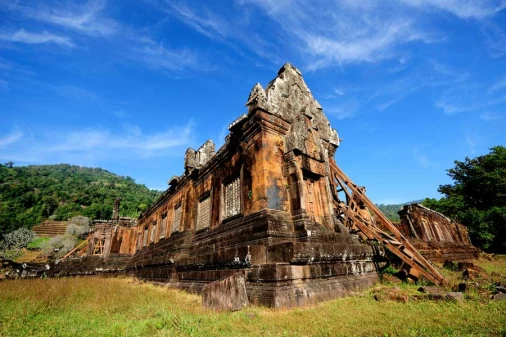
Wat Phou Salao
The centrepiece of this hilltop temple across the Mekong from Pakse is the giant Buddha statue looking...
Frequently asked questions
Pakse is also known as Pakxe and is the charming capital of the Champasak province in the south of Laos. This is also the second most populous city in the country, and many people come through here to visit other famous spots like the Bolaven Plateau and the Si Phan Don Islands. This is also the place where you will find the convergence of the Sedone and Mekong rivers and so it is well worth spending a few days here before you move on to other spots in the country.
As this is a riverside town, you can spend time watching the river and strolling along the delightful waterfront promenade for which Pakse is famous. Some of the other reasons to visit Pakse include the delightful colorful markets as well as the stunning temples and the delicious street food stands that serve fresh local Laotian fare.
Here are the 15 best things to do in Pakse…
1.Admire Wat Luang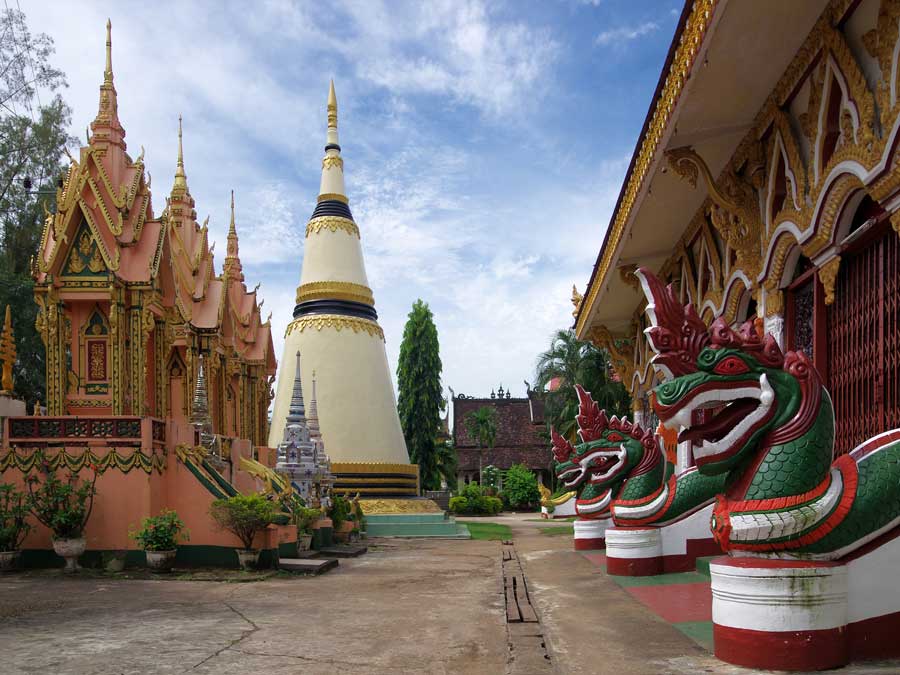
Wat Luang is said by locals to be the largest and prettiest temple in all of Pakse and is also the home of a number of monks who live on the property.
If you want to see the famous Laotian alms giving ceremonies performed by the monks, then this is one of the best places to do so.
Another good reason to come here is that this is one of the most beautiful but also less-visited temples in Laos so you won’t have to compete with the crowds.
2.Tour Champasak Historical Heritage Museum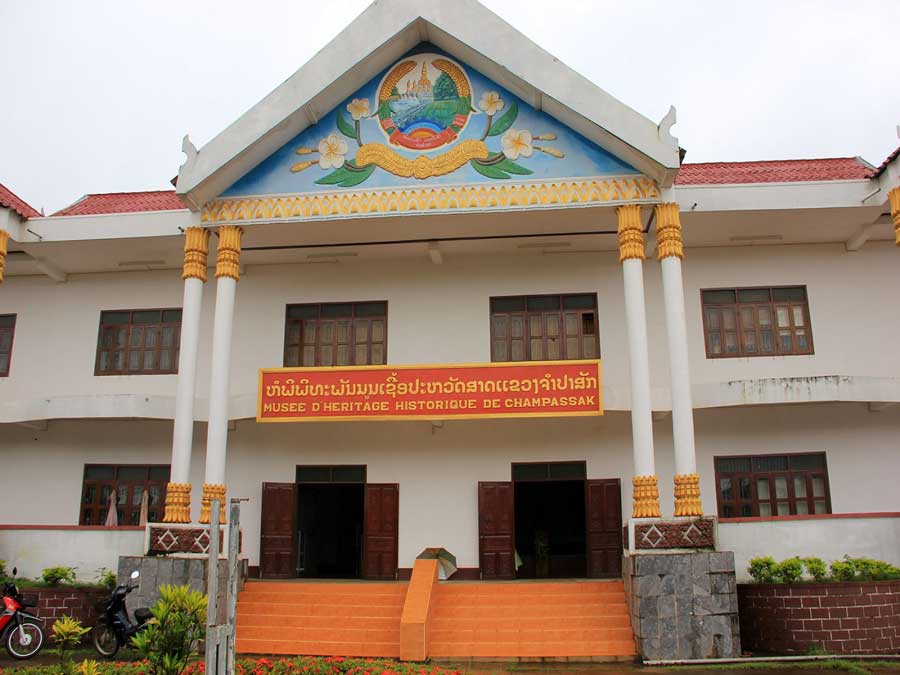
For an overview of the history and culture of the Champasak region, you need to head to the Champasak Historical Heritage Museum.
Here you will find a number of antiques such as Dong Son drums which are made of bronze and ornate stone carvings that were found at the Bolaven Plateau.
There are also pieces from the Khmer kingdom as well as weaponry and even musical instruments.
If you are interested in the local jewelry and handicrafts of the ethnic grounds around Pakse such as the Laven, Suay and Nyaheun then you will also find galleries showcasing textile and pieces such as antique earrings.
3.Visit Wat Phou Salao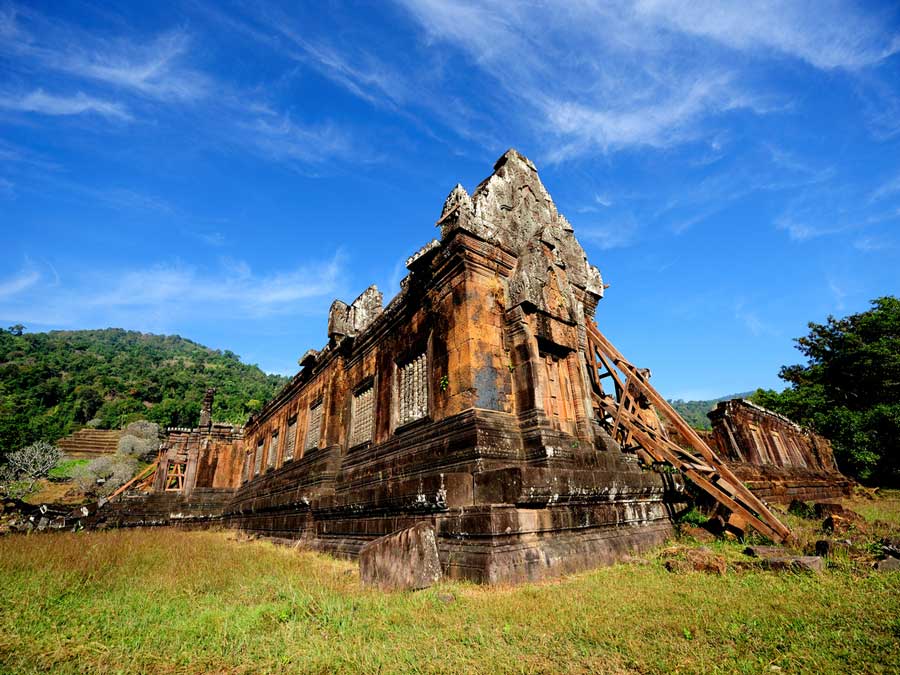
Wat Phou Salao is a charming temple in a Pakse that is located on a pretty hill that looks out over the Mekong River.
The temple has the claim to fame of having a large statue of the Buddha inside and, as you would expect, the best time to come here is around sunset when you can enjoy majestic vistas across the countryside.
One thing to note is that you will need to climb up a long and steep staircase to get to the temple so make sure you plan accordingly and wear appropriate footwear.
4.Stock up on souvenirs at Dream Weaver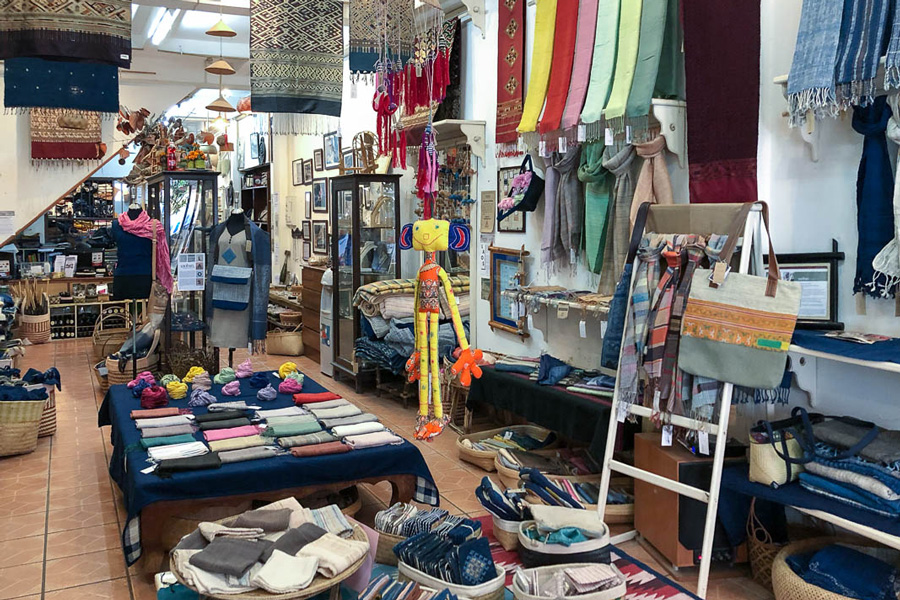
If you are looking for some souvenirs in Pakse then look no further than Dream Weaver where you will find a small shop that is part of a local NGO. The store is dedicated to showcasing and selling local textiles which are made using ancient weaving techniques.
In addition to the fabric pieces on sale, you will also find some other souvenirs such as carvings.
All the proceeds of anything you buy are then funneled back into the local community and many of the pieces are made by victims of human trafficking who have been rescued.
5.Tour Sacred Heart Church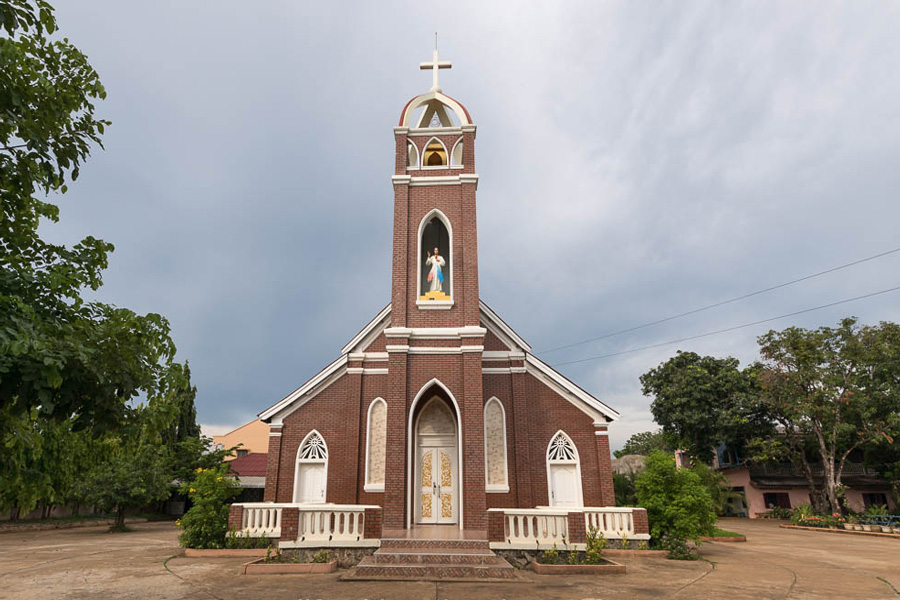
As you would expect in Laos, you will find temples scattered all over the countryside.
If you are looking for a change of architectural pace however, then you can also visit the Sacred Heart Church which doesn’t look very impressive from the outside but which is actually best known for its interior decorations.
Once inside you will find a number of custom paintings such as Jesus visiting different regions in Laos such as the famous Khon Phapheng Falls and Wat Phu Champasak.
What makes the whole thing even more surreal is that Jesus is also wearing regional outfits in the paintings.
6.Take a trip to Mai Savanh Lao Farm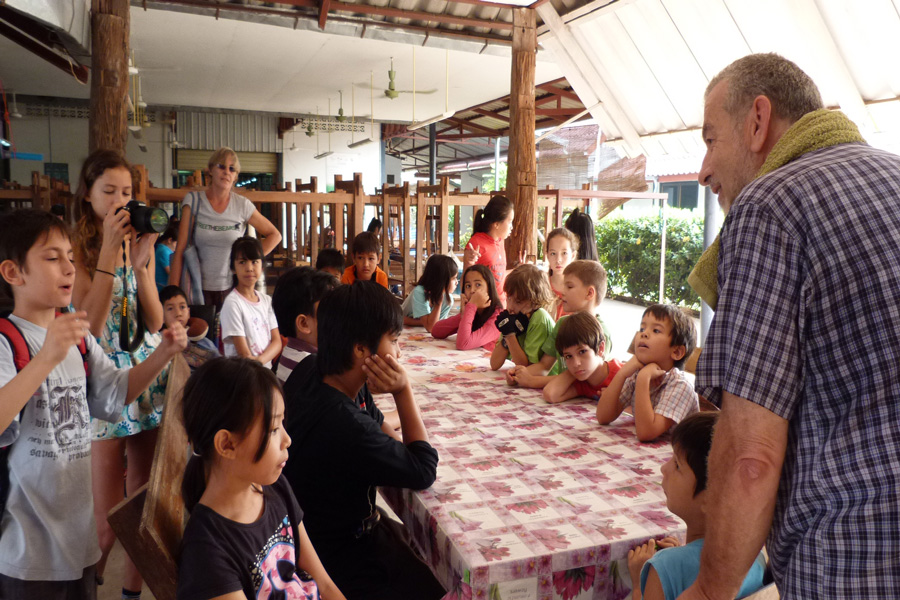
Mai Savanh Lao Farm is also called the Silk and Tea Farm and is located in Thateng which is around 10 kilometers outside Pakse.
The farm is run by a local NGO and is meant to provide a livelihood for disadvantaged ethnic minorities in the surrounding villages.
The farm is covered in aromatic local plants such as lemongrass, pepper and tea plantations and you can also find pineapples and mulberries here.
To learn all about the work of the farm and the produce on show, you can take an interesting tour with a local guide.
7.Shop at Pakse Souvenirs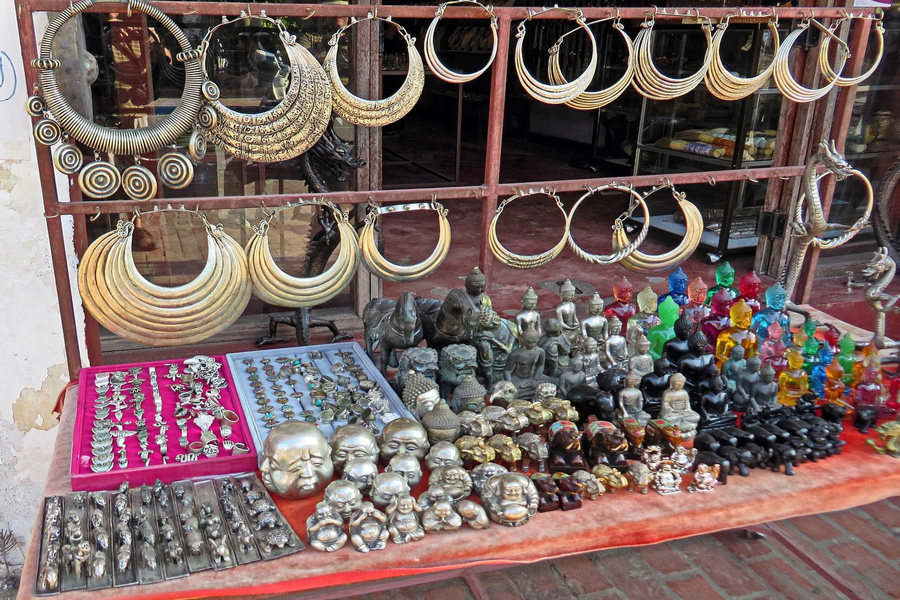
Pakse Souvenirs is the place to come if you are interested in local souvenirs, and this shop sells pieces in both the northern and southern styles.
The aim of the shop is to create modern pieces which blend traditional patterns and you will find items such as textiles, furniture, carvings and jewelry.
One of the great things about the items on sale here is that some are made with recyclable materials such as secondhand linens.
8.Stroll along the banks of the Mekong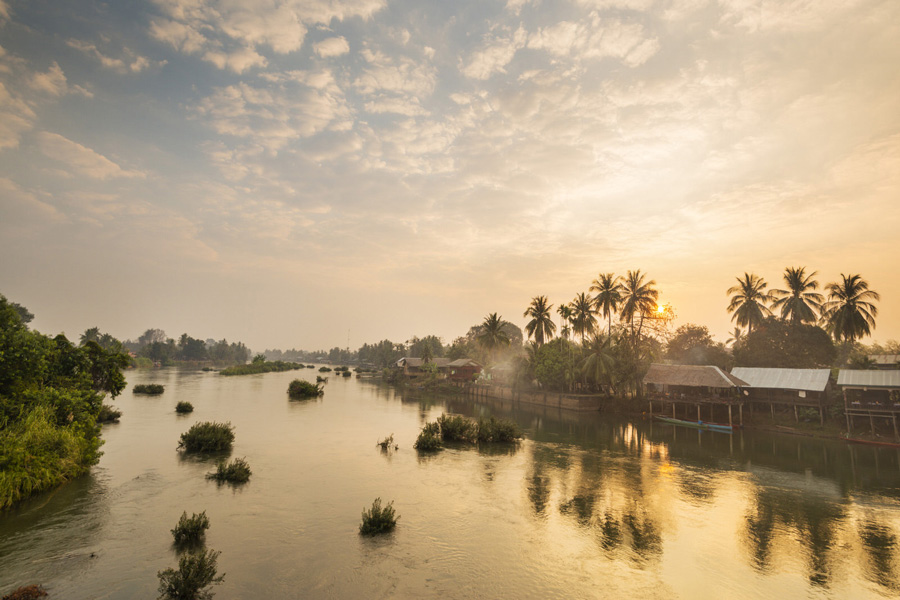
If you are looking for something to do at night in Pakse then you might want to head to the banks of the Mekong River that runs through town.
There is a riverfront promenade here and you will find some local street food stalls as well as a few restaurants that look out over the water.
There are also several boat restaurants if you fancy dining on the Mekong itself.
9.Eat at Ban Tong Night Market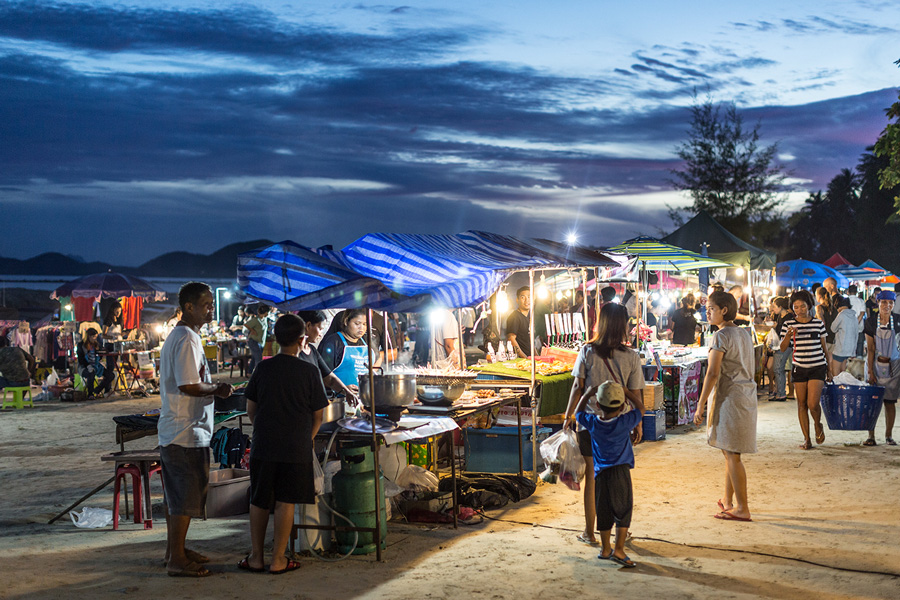
Ban Tong Night Market is a good place to come if you fancy a bite to eat at night although you won’t be able to eat here as there are no chairs or tables.
You can still however get some delicious bites to take away and there are plenty of pretty spots along the river where you can sit and enjoy the local snacks.
Bear in mind that most of the food is cooked fresh in front of you so you can just peruse the stalls and pick out what you want to eat based on what looks good on the day.
10.Enjoy the Boat Race Festival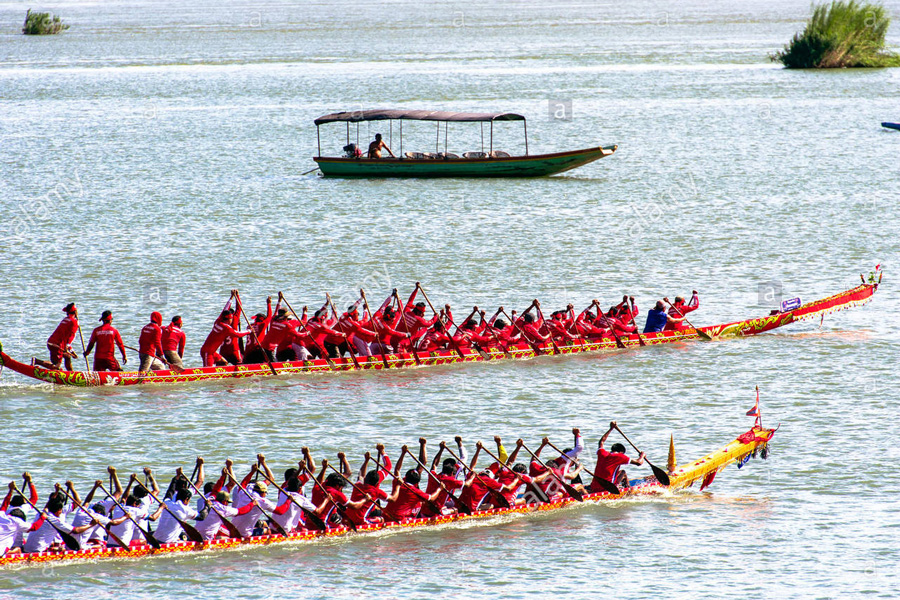
If you are in Pakse at the end of October then make sure you head to the Boat Race Festival.
This lasts for some three days and this is when large boats paddle along the Xe Don River.
There is also a carnival held in Pakse and you can visit the fairgrounds that are set up with games and street food snack stalls.
There are also usually street performances such as drumming and musical competitions.
11.Try the noodles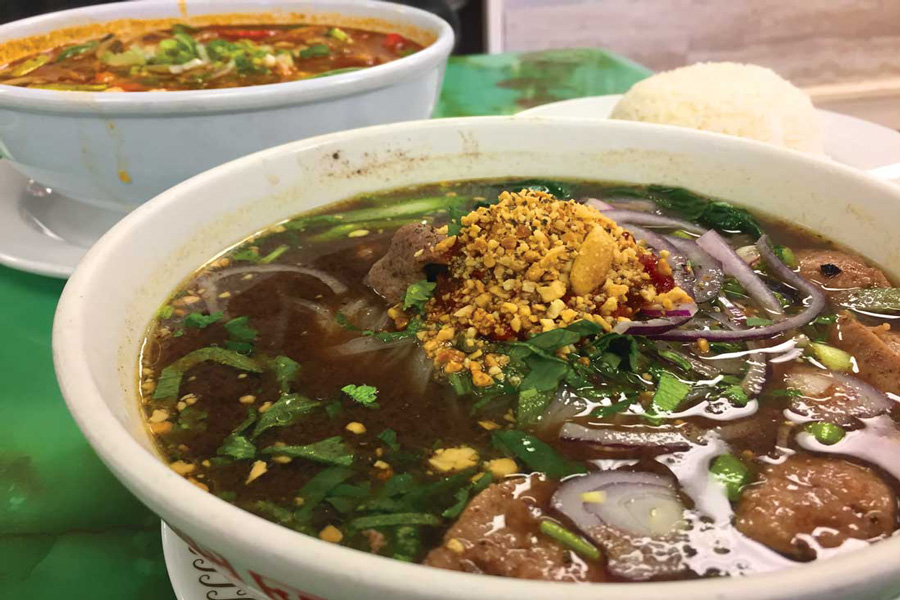
Pakse, and wider Laos, is known for its noodle dishes which you can get all over town.
These are mainly noodle soup dishes which come with a dizzying array of herbs and they make a great snack if you are looking for something wholesome and soothing.
The best thing about the noodle stands in Pakse is that you can get a bowl of soup for as little as KYT 15,000.
12.Shop at Talat Dao Heuang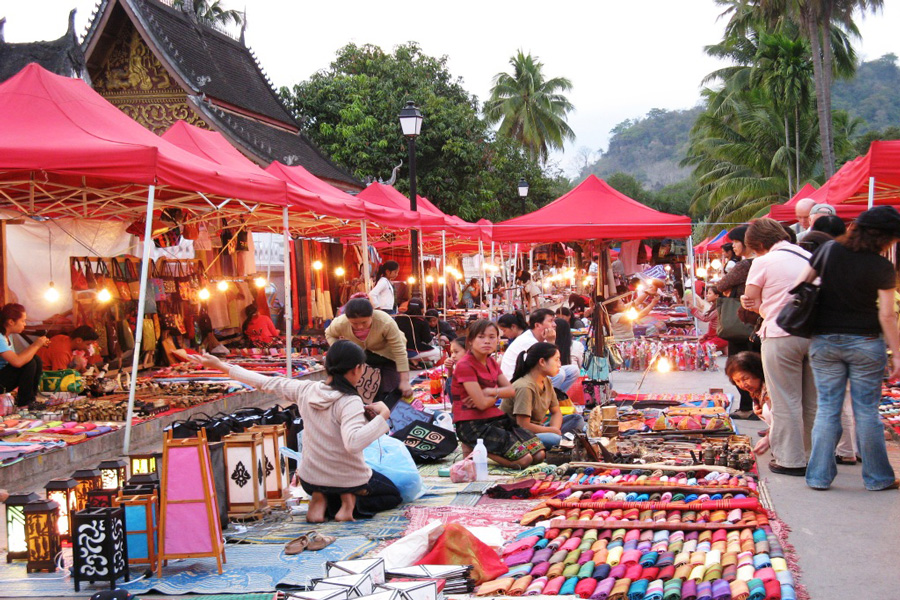
Talat Dao Heuang is known for being the largest market in town and is located close to the famous Japanese Bridge in Pakse.
Not only is it the biggest market of its kind in the city but it is also known for being one of the largest and most varied across the whole of Laos.
On a trip here you will find delicious local fruits and vegetables and there are also sections that sell oddities like traditional medicine as well as electronics, clothes and shoes.
13.Eat at the baguette stalls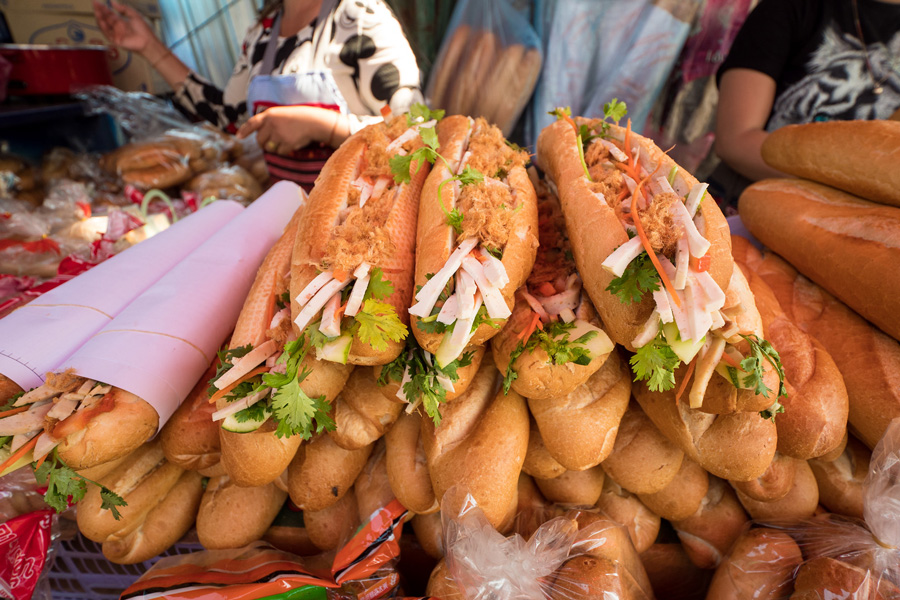
As Laos used to be a former French colony, there is a great tradition of eating delicious breads here.
With that in mind, you will find toothsome baguettes being sold all over Pakse, and usually these are served up to you out of carts at the side of the road.
Most of the baguettes are simply stuffed with tasty pork pate and mean to be eaten as a snack although vegetarians may be able to get other options that use local herbs, salads and omelets.
14.Have a drink on the riverfront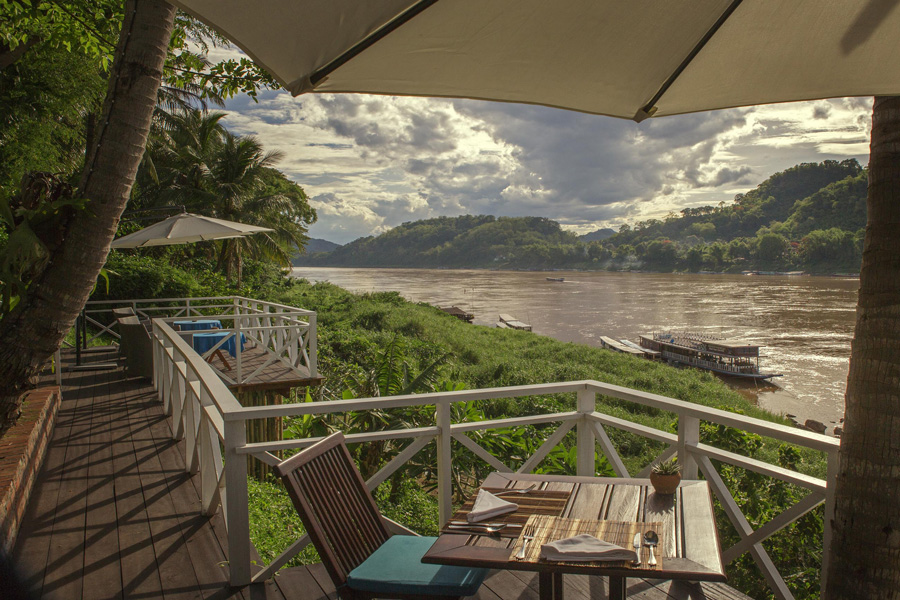
As with many towns and cities in Southeast Asia, the best place to find a sunset drink in Pakse is down by the waterfront.
The local tipple in Laos is beer Lao and you will find a number of stalls, cafes and eateries lining the gorgeous Mekong River.
To get to this part of town you will need to walk across the delightful French Bridge which affords you pretty views across the river.
15.Travel on to the Bolaven Plateau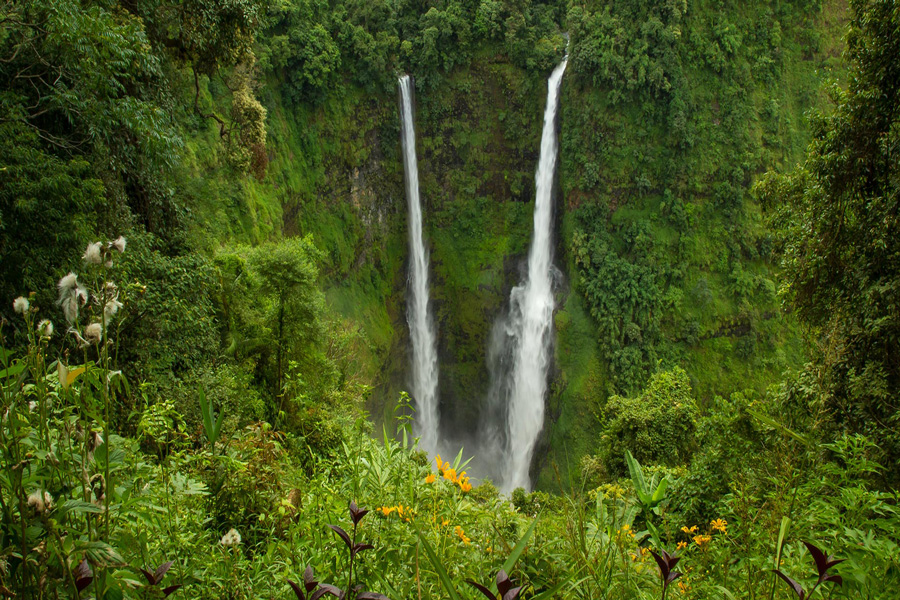
The Bolaven Plateau is, ironically, one of the main reasons that many visitors even find themselves in Pakse.
This is also one of the main tourist spots in Laos and is made up of a large plateau that is covered in rivers, majestic jungle and cascading waterfalls.
This is also the region of the ethnic Laven group in Laos and you will also find some traditional villages dotted around the area.
With that in mind, the best way to end your stay in Pakse is to move on to the Bolaven Plateau and check out all the beauty of this iconic region of Laos.
Day 1:
08.00: Full day to Vatphou and Khoneprapheng Tour
Vat Phou the 1,500 years sandstone sanctuary was named “Bhandharesvava“ in Hinduism, and dedicated to God Shiva there are two grand prasads Ribrary and the main sanctuary on the high level of the mountain is the most interesting and important archeological site in Laos. it constitutes the origin of the Khmer civilization, along time before Angkor Wat. It became a Buddhist site during the 16th century.
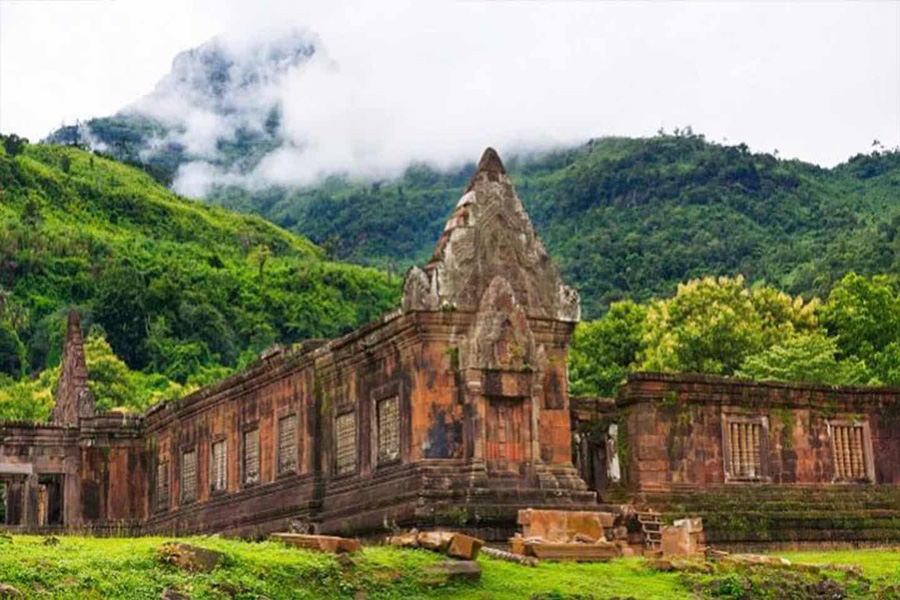
16.00: Golden Buddha Pakse
The temple is a great place to watch a sunset and see the river. The Buddha is quite impressive once you climb past the abandoned construction. Plus, it’s popular with locals – which certainly isn’t the case with a lot of western tourist activity in Laos. Say hi to some friendly people who will be curious about you making the trek up the hill!
By the way, the food stalls at the bottom serve some interesting grill items, spicy noodle/cucumber/snail salad and cold beer in case you are hungry/thirsty after the climb. Cheap as chips, large beerlao 10k Kip!
To reach this statue one must first cross the bridge from the city. This can be down on foot, but a bike or rental vehicle is the better option. Then the ascent of the steps. Then before you is the Buddha. Around and behind the Buddha are several structures in partial stages of construction. There are a prayer hall, exhibitions, and a restaurant or two.
Day 2:
08.00: Bolaven plateau
East of Pakse is the Bolaven Plateau, a mountainous and forested area about 45 minutes away by car. The area is known for its great scenery and many waterfalls. The highest falls are Ted Fane. Getting to the 120 meter high twin falls requires a trek through the forest starting near the 38 kilometer marker off Route 16 from Pakse to Paksong. Another waterfall, the Tad Gneuang is found deeper into the forest. Trips can be booked at Pakse travel agents.
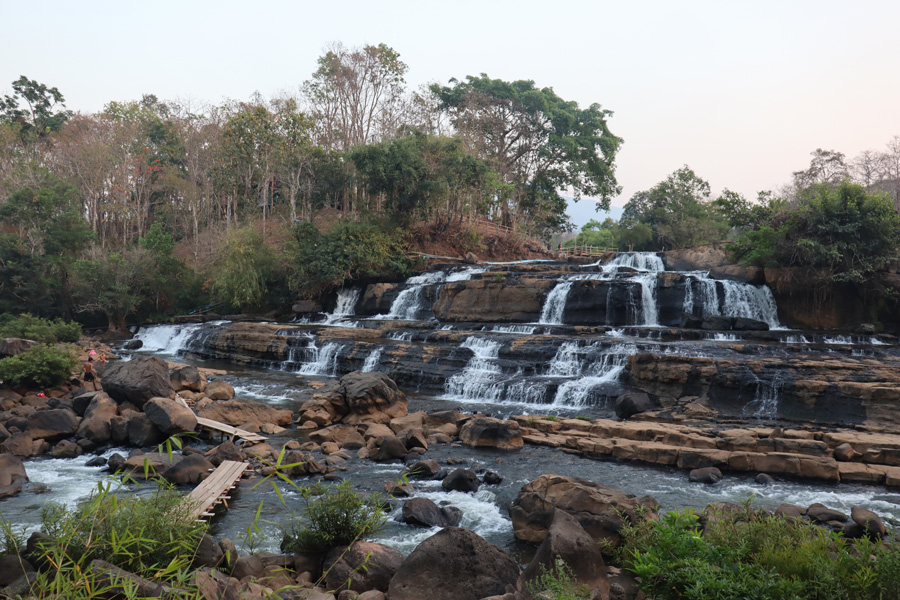
The plateau’s elevation ranges approximately from 1,000 to 1,350 metres above sea level and here the weather in general is milder than the rest of the country, getting cool, especially at night.
Its fertile plains allow farmers to produce some of the best tea and coffee in the country (coffee remains Laos’ biggest agricultural export.) Tourism has become another important source of income for locals as the area has almost unlimited trekking and daytrip opportunities.
The impressive Tad Fane twin falls thunder over 100 metres down the steep cliffs into a gorge, located a few kilometres west of Paksong Town, Champasak Province. The scenic rainforest spot is part of a big national park where wild animals live, including leopards, tigers, elephants and monkeys. Hornbills are among the 300 bird species found in this area.
14.00: Pakse Chinese Temple (Wat Tsin)
Pakse is not exactly a bustling metropolis but if the party crowd at the Mekong riverfront or the tourists `downtown` bug you, head to this Chinese temple to calm down. The Temple features the unique chinese architecture and buddhist artifacts.
The old French bridge (road 13 from the city to airport) will be closed until 2015. But you can cross the Xedon river with one of the small boats. Just walk down to the river behind the bus station or behind Vat Luang (excellent opportunity to combine this trip with a visit to Vat Luang!).
Free to enter and on two floors you’ll find various Chinese buddhist artifacts, demarcating the Chinese influence in Pakse.
15.00: Champasak Historical Heritage Museum
The simple textile and jewellery collection from the Nyaheun, Suay and Laven groups is also interesting for its large iron ankle bracelets and ivory ear plugs.
Also on display are musical instruments, stelae in Tham script dating from the 15th to 18th centuries, a water jar from the 11th or 12th century, a small lingam (Shiva phallus), a scale model of Wat Phu Champasak, and some American UXOs (unexploded ordnances) and other weaponry.
15.30: Wat Luang Temple
There are several funerary reliquaries lining the front of the compound. The largest of these houses the ashes of a former prime minister from pre-revolutionary times.
It has some wonderful paintings in the main temple which are been recently restored. Best to visit early morning or late afternoon when the sunlight catches the colours bes for some stunning photographs.
This Wat is just a short walk from the center of Pakse. Every morning at sunrise monks from Wat Luang walk past the river and collect their alms.
Behind the temple there is the Mekong River and the view is tremendous. People enjoy fishing, people commute by a small boat. I spent hours to watch the views.
1.Cafes and coffee houses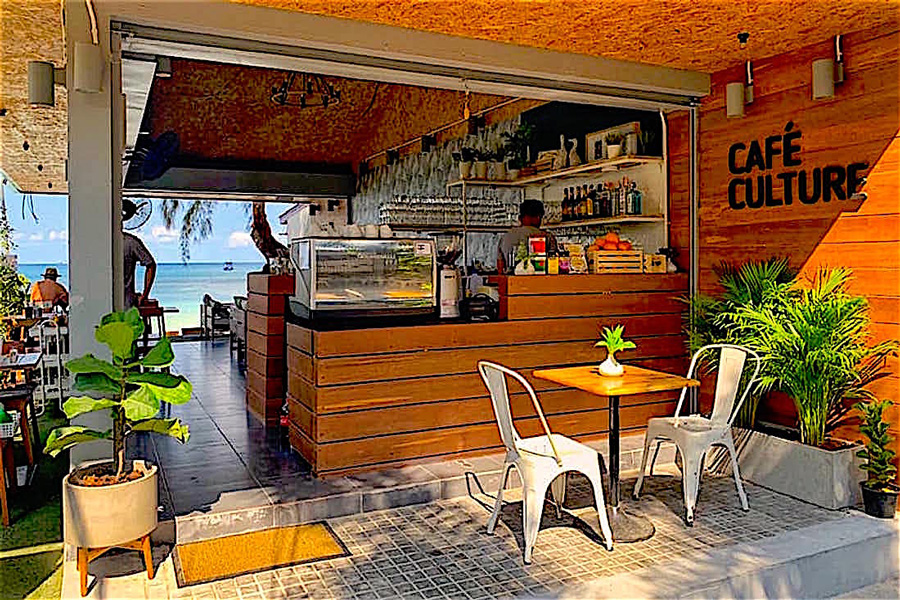
There are quite a few cafes in Pakse, which makes sense when you consider how close Pakse is to the main coffee growing regions in Laos.
Sinouk Cafe, located close to the Champasak Shopping Center, is a popular spot that maintains a French colonial feel in the building and offers some fancier coffee drinks featuring Sinouk coffee, one of the most popular coffee brands in Laos. It’s a good place to relax and enjoy some free wifi while treating yourself to a pastry or coffee.
Vida Bakery Cafe, located just north of Road 13, is another popular cafe spot with breakfast and lunch menu options costing about LAK15,000, burgers for LAK30,000, or pastries as low as LAK5,000. Smoothies and other coffee drinks run between LAK10,000-LAK15,000. Vida Bakery Cafe is a great option if you’re looking for nice Western food.
2.Diner with a view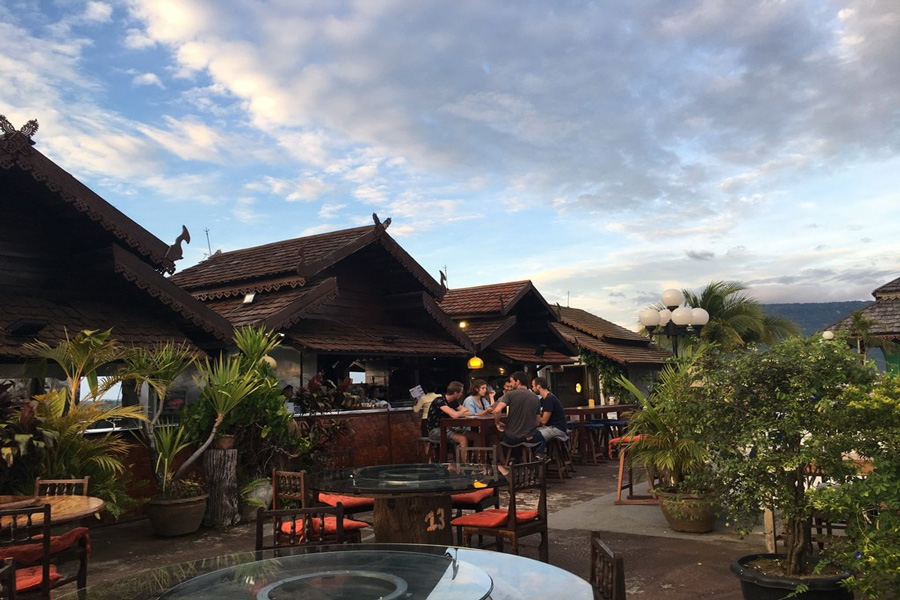
Because Pakse is located right along the Mekong River, many travellers here enjoy watching the sunset while having beer or dinner along the riverside.
Louk Sai La is one spot along the river where you’ll not only get great views of the sunset, but also of the Japanese bridge when it is lit up at night. You can get both beer and food here.
Another good spot for views of the river as well as the surrounding mountains and scenery can be found at Le Panorama, a rooftop restaurant on top of Pakse Hotel. Like most other restaurants in Pakse, you can find a good mix of Lao, Western, and Thai dishes here, and prices start at about LAK45,000.
3.Markets
Dao Heuang Market is one of the largest markets in Laos, and a great way to feel like you’re getting an “authentic,” local Lao experience. Of course you’ll see plenty of fresh fruits, vegetables, meats, and fish for sale, as well as other household goods, but there is also a “food court” of sorts in the market, where you can purchase noodle soups, fried sausages, spicy papaya salads, and other traditional Lao snacks and dishes. In addition to Dao Heuang Market, there is also a central market that is closer to the tourist area of town (across from Pakse hotel); this is also a great spot for purchasing Lao food.
1.Spring (March through May)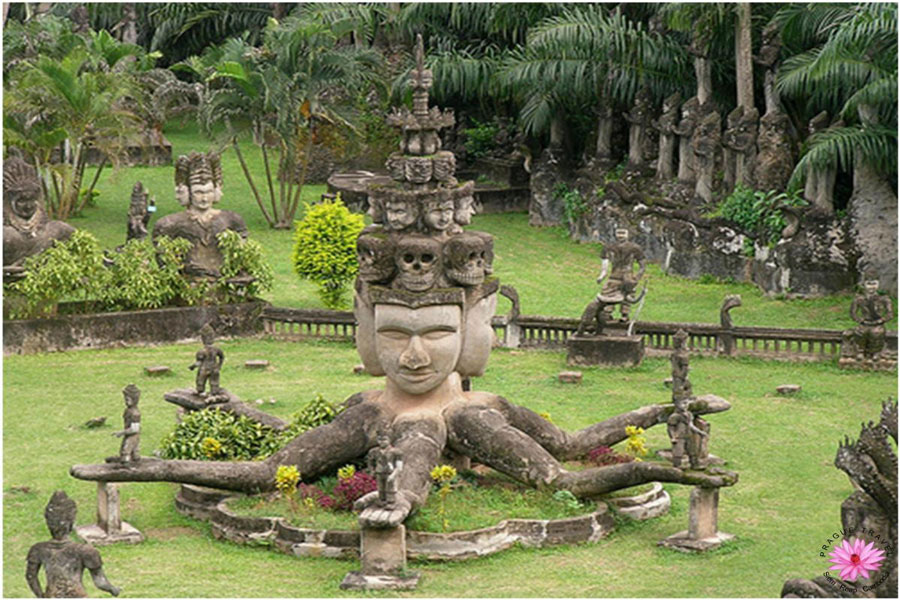
Humidity and temperatures combine to make this season feel warm. Highs range from 96.4°F (35.8°C) and 91.2°F (32.9°C) with similar temperatures in the later months. Rain is somewhat common with 2 to 11 days of significant precipitation per month. Spring is the second busiest for tourism, which makes it a good time for those looking for things to do.
2.Summer (June through August)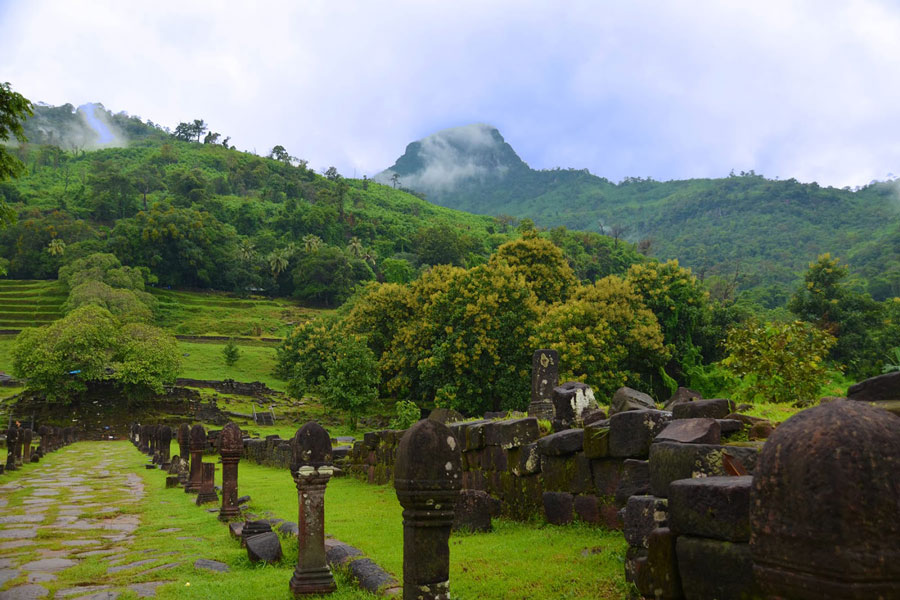
The middle-year months have very comfortable weather with high temperatures that are quite warm. These months see the most precipitation with 14 to 18 days of precipitation per month. June – August is the busiest season for tourism in Pakse, so lodging and other accommodations may cost more than usual.
3.Fall (September through November)
Fall daily highs range from 90.7°F (32.6°C) and 87.2°F (30.7°C), which will feel very nice given the humidity and wind. It rains or snows a significant amount: 2 to 16 days per month. Tourism is the slowest during these months due to the weather, so hotels may be affordably priced.
4.Winter (December through February)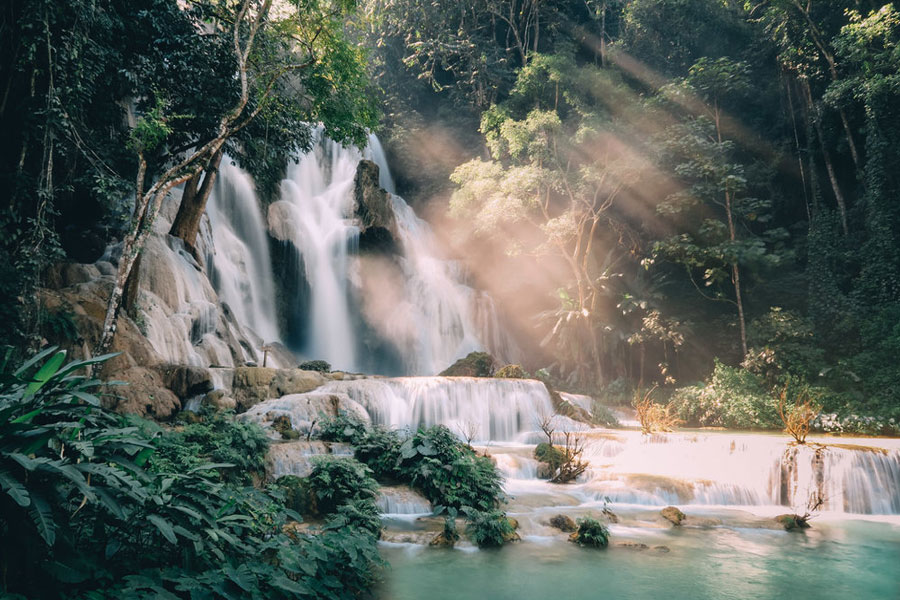
Weather is perfect this time of year in Pakse to be enjoyable for warm weather travelers. The average high during this season is between 95.2°F (35.1°C) and 87.8°F (31°C). On average, it rains or snows a insignificant amount: consistently 0 times per month. These times of year are fairly slow with tourists.
Pakse, or Pakxe, is a city in Southern Laos. It’s the capital of the province Champasak and Laos’ second most populous city. Pakse is the perfect hub for your Southern Laos travels to places as the Bolaven Plateau and 4000 islands. But it’s way more than just a hub or gateway. It’s a charming and peaceful city surrounded by beautiful nature. Pakse means mouth of the river, and its located next to the Mekong and Sedone rivers. We recommend staying at least two days in Pakse, to enjoy everything it has to offer and to enjoy the laid-back Lao culture.
 France
France  Spain
Spain  German
German  Italian
Italian 

 Vietnam Tours
Vietnam Tours  Cambodia Tours
Cambodia Tours  Myanmar tours
Myanmar tours  Thailand Tours
Thailand Tours  Laos Tours
Laos Tours